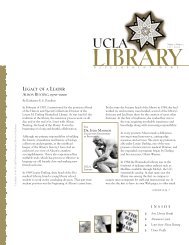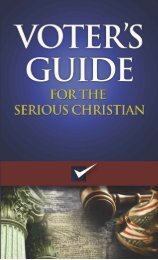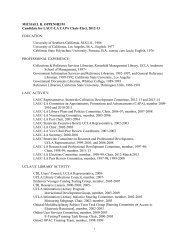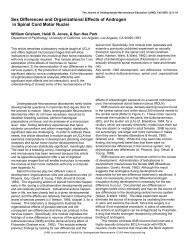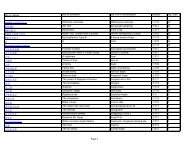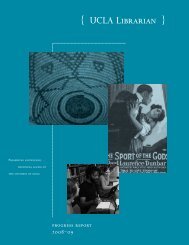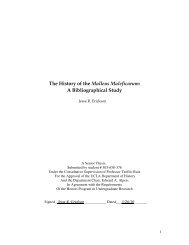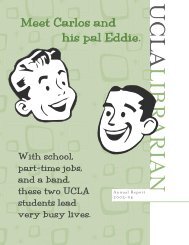Research Paper - UCLA Library
Research Paper - UCLA Library
Research Paper - UCLA Library
You also want an ePaper? Increase the reach of your titles
YUMPU automatically turns print PDFs into web optimized ePapers that Google loves.
possessed a physical body that would eventually age and die, the monarchy itself and the office<br />
of kingship would never change. When Elizabeth came to the throne in 1558, there became a<br />
need to provide the new queen with a similar security, inextricably linking her wellbeing to that<br />
of the state. Elizabeth’s first speech after her sister Mary’s death, delivered on November 20,<br />
1558, utilized the language of the “two bodies,” marking Elizabeth’s first recorded use of the<br />
metaphor (Loades 36). Addressing her Council, the new Queen professed, “I am but one body<br />
Gu 23<br />
naturally considered, though by His permission a body politic to govern” (Loades 36). From the<br />
very beginning of Elizabeth’s reign as Queen, the twenty-five-year-old monarch sought to<br />
identify her physical body with the body of the state. In 1561, Elizabeth’s lawyers solidified this<br />
message, legally endowing her with “two bodies: a body natural and a body politic… The body<br />
politic was supposed to be contained within the natural body of the Queen,” giving her the right<br />
to govern (Axton 12). The Elizabethan propaganda machine adopted the rhetoric of the king’s<br />
“two bodies” and “in the process of being regendered, the trope of the King’s Two Bodies was<br />
fundamentally reshaped… the emphasis of the trope was no longer solely upon the distinction<br />
between the mystical office of kingship and its transitory creaturely occupant but also upon the<br />
contrasting character of a woman monarch’s public and private virtues” (Montrose 219). The<br />
public “royall queene” is differentiated from the private “vertuous and beautiful lady” and Louis<br />
Montrose emphasizes the gendering of these two roles: “as the embodiment of divinely<br />
sanctioned political authority, the former person was implicitly masculine, whereas the latter,<br />
private person was explicitly feminine” (Montrose 219). Indeed, Elizabeth herself was aware of<br />
this division between the public masculine self and the private feminine self and tried to take<br />
advantage of the concept of the “two bodies” to validate her ability to rule despite her gender. In<br />
her often-quoted 1588 speech at Tilbury, Elizabeth attempts to blur gender distinctions, claiming,



